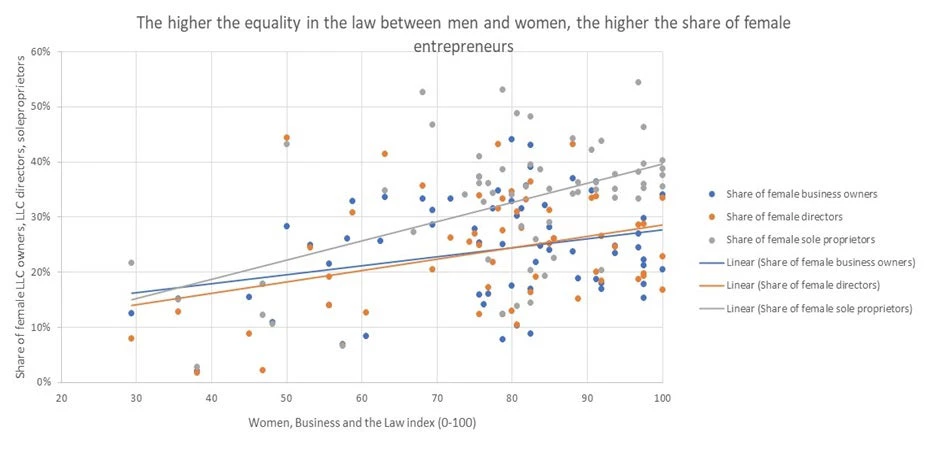Understanding the landscape of female entrepreneurial activity is pivotal to fostering inclusive economic growth. In this context, the World Bank, in partnership with Women Entrepreneurs Finance Initiative (or We-FI), has developed the Entrepreneurship Database, a vital tool to inform and design policies for the participation of women in the business world.
Every other year, the Entrepreneurship Database collects and publishes global sex-disaggregated data on entrepreneurship. It looks at the differences in the number of female and male entrepreneurs. The latest edition has sex-disaggregated data on entrepreneurship from 95 economies and covers the 2014-2022 period.
How big is the gender gap in formal entrepreneurship?
By assessing the number of business owners, business directors and sole proprietors, this database offers insights into the distribution of entrepreneurial ventures by gender. The latest data underscores an ongoing disparity between men and women in the ownership or management of limited liability companies, highlighting both the persistent challenges and opportunities for advancing women’s entrepreneurship worldwide. On average, three out of every four new business owners and directors were men.
How has the gender gap in entrepreneurship changed over time?
Since 2014, the gender gap in entrepreneurship has shown little improvement, although recent years have seen some positive developments.
While the average share of female business owners and directors did not grow much, there has been a slight uptick in the proportion of female sole proprietors, rising by 6 percentage point to reach 38%. This has been more pronounced in a few countries, such as in Zambia where it went from 30% in 2014 to 39% in 2022 (+9 points), in Chile where it increased from 30% to 41% (+11 points), and in Rwanda that achieved parity in the share of female sole proprietors in the past years (+16 points).
In Rwanda, multiple reforms were implemented that contributed to an increase in formal entrepreneurship, particularly for women. For instance, Rwanda digitalized all business registration procedures across the country, with more than 50 legal and institutional reforms implemented since 2008. In addition, the government offered training for women entrepreneurs, advisory support, and digital literacy programs.
In 2022, Thailand had the highest share of female sole proprietors, followed by Jamaica and Austria. Thailand’s women accounted for more than half of sole proprietors (58%). Thailand is also the second economy with the highest share of female business owners after Mongolia and the second economy with the highest share of female business directors after South Africa.
While sole proprietorship offers women an entry into formal entrepreneurship, sole proprietorship lacks protection for entrepreneurs' personal assets and presents limitations for business expansion.
Why is gender disaggregated data on entrepreneurship needed?
The gender gap in entrepreneurship reflects recurring underlying disparities and tends to signal inequalities in access to institutions. There is a strong relationship between the level of female entrepreneurship and the legal disparities measured by the Women, Business, and the Law index. Due to legal constraints around the world, women do not have the same ability to start and operate a business in the same way as men. It is therefore essential to measure the impact of policies designed to support female entrepreneurs.
Figure 5: The higher the equality in the law between men and women, the higher the share of female entrepreneurs

Tailored government efforts have the potential to address the entrepreneurial gap that women face. For that, more gender disaggregated entrepreneur data is important for recognizing disparities, shaping policies, and fostering inclusive economic development.




Join the Conversation